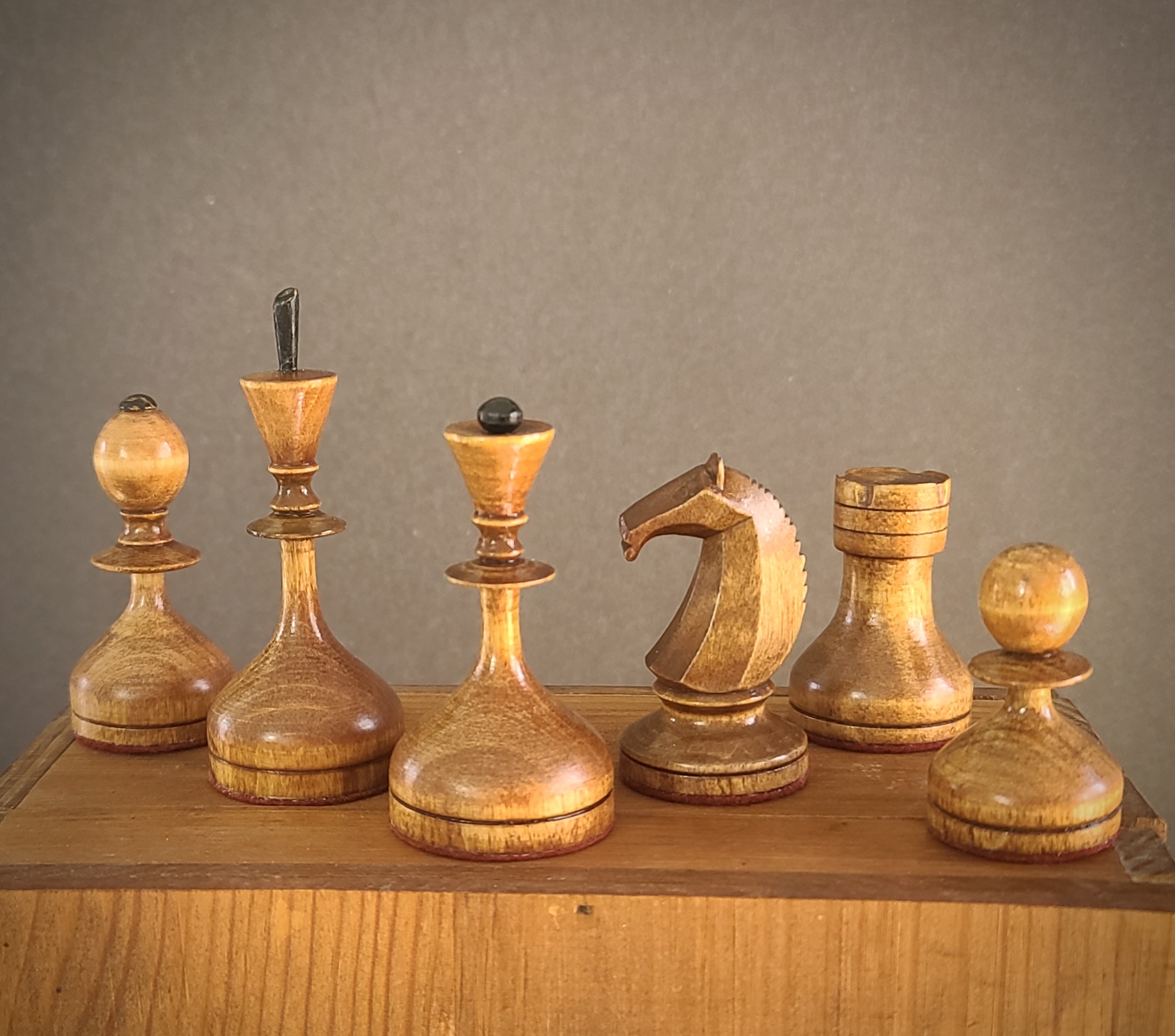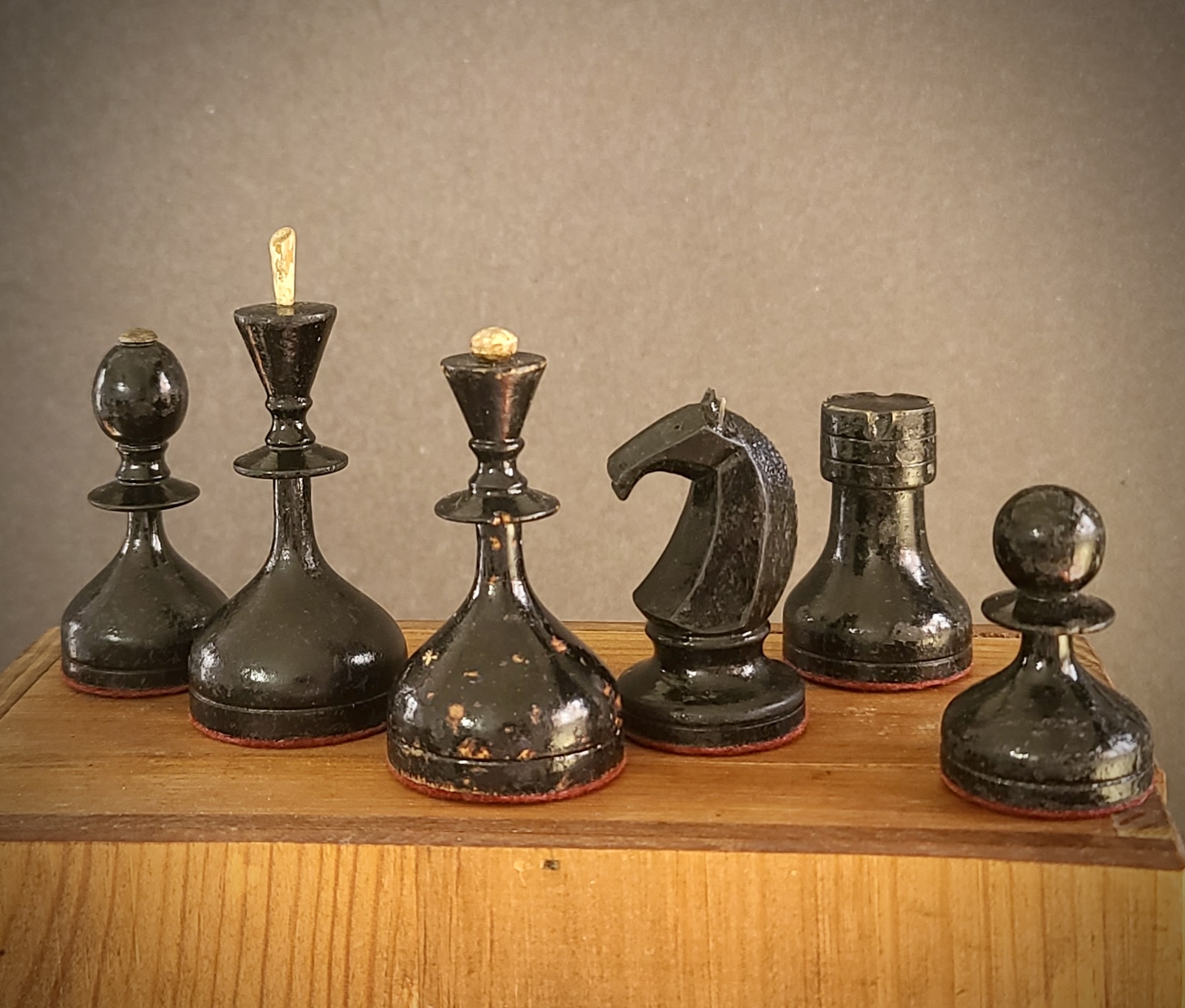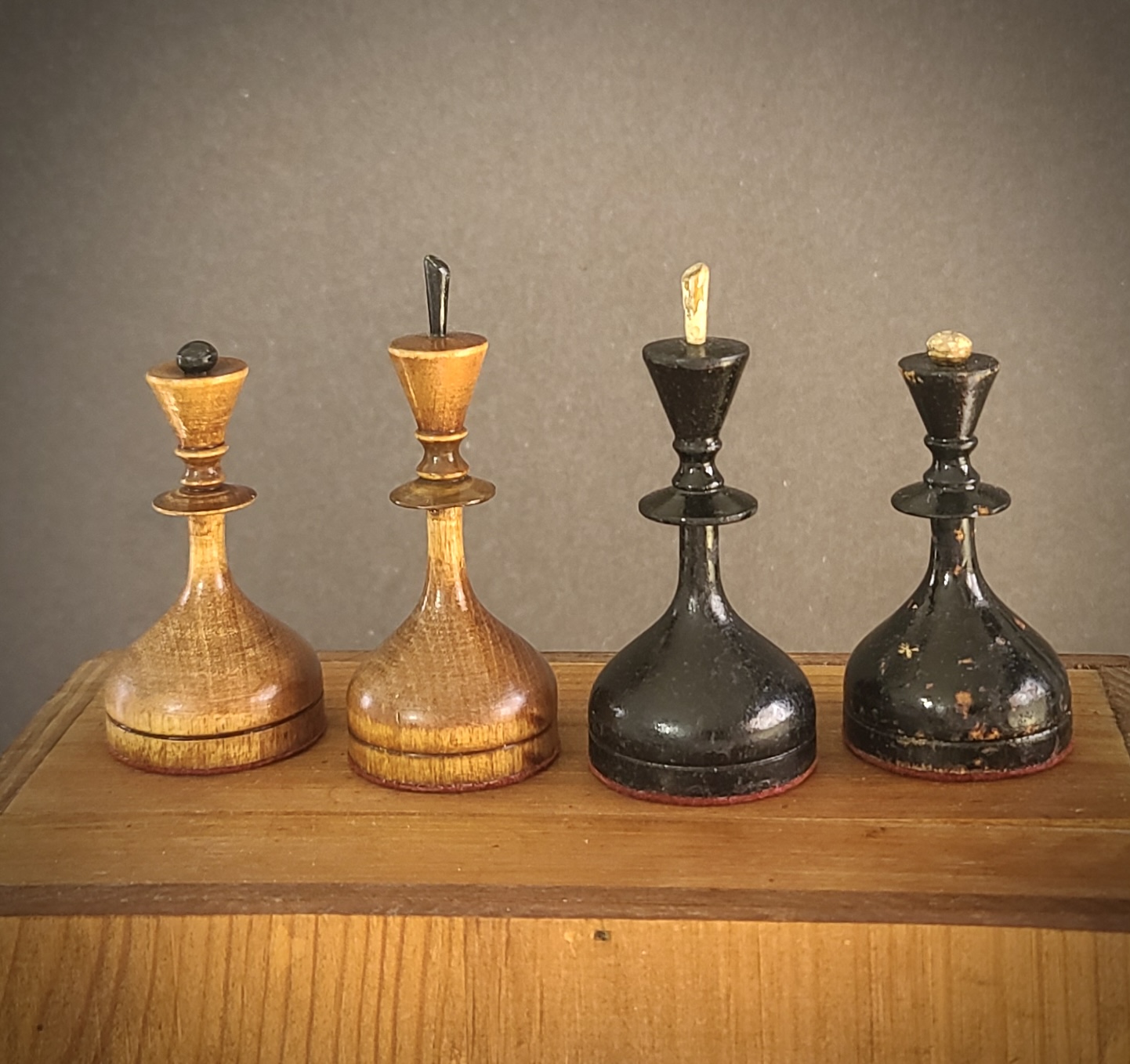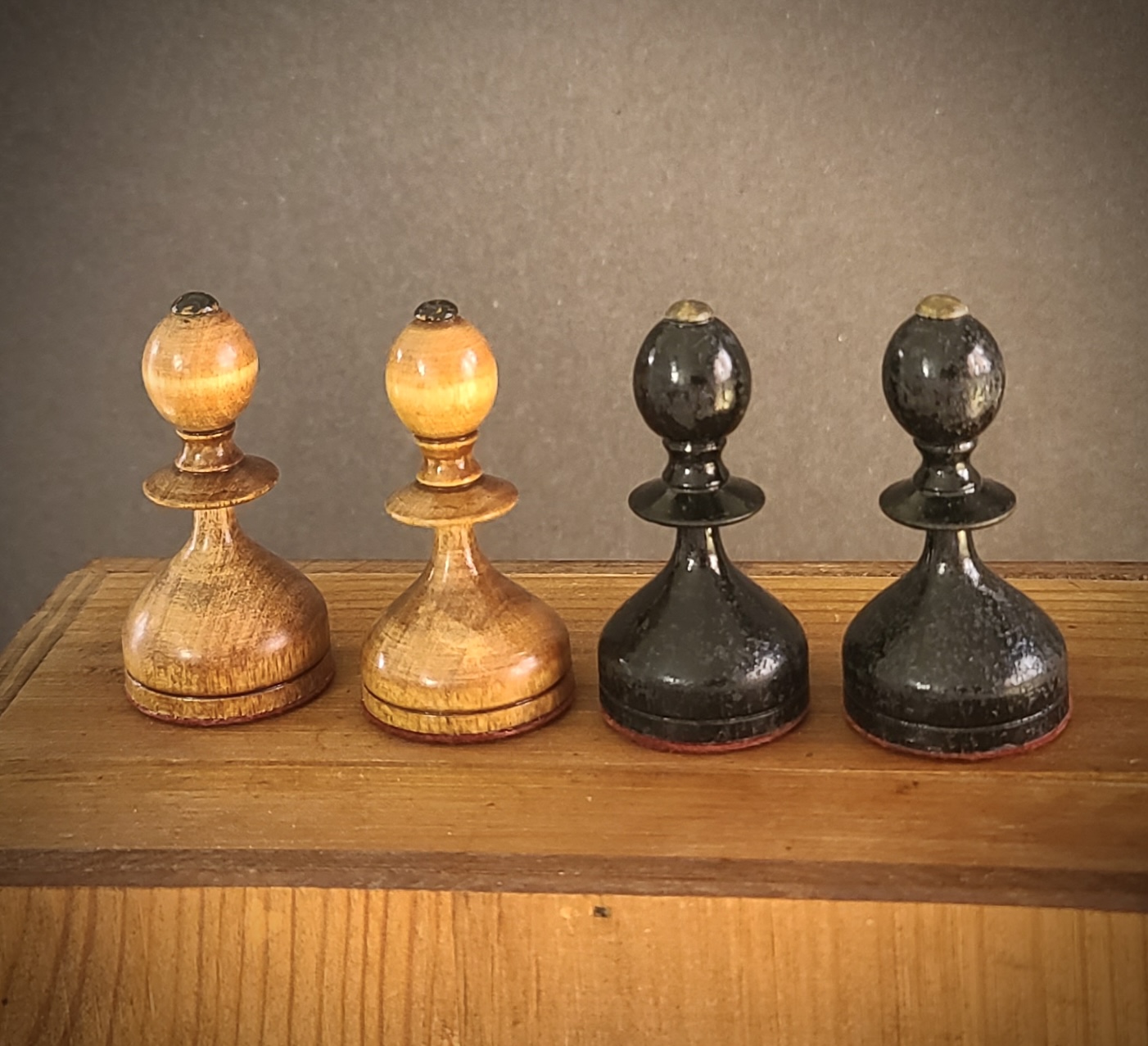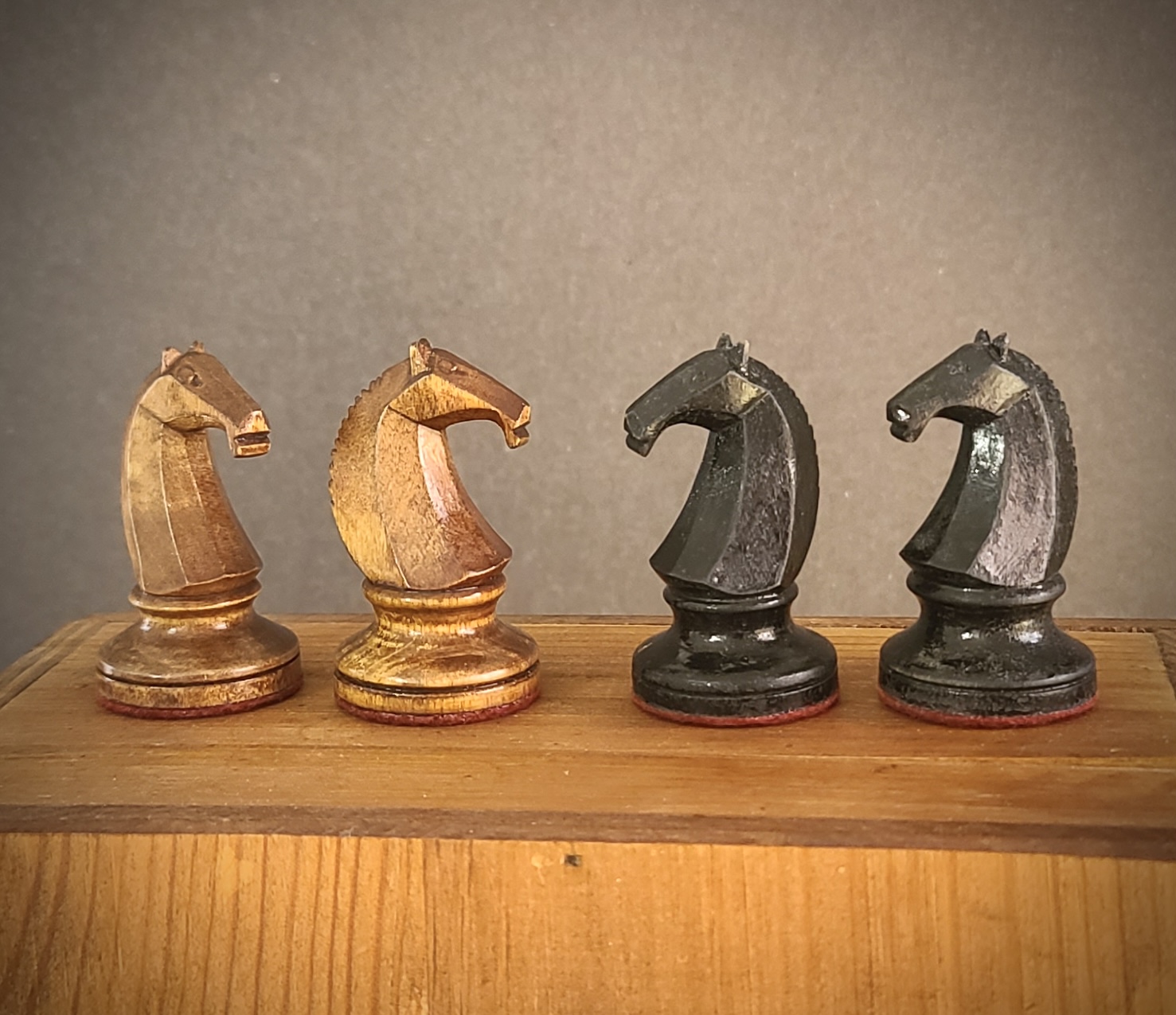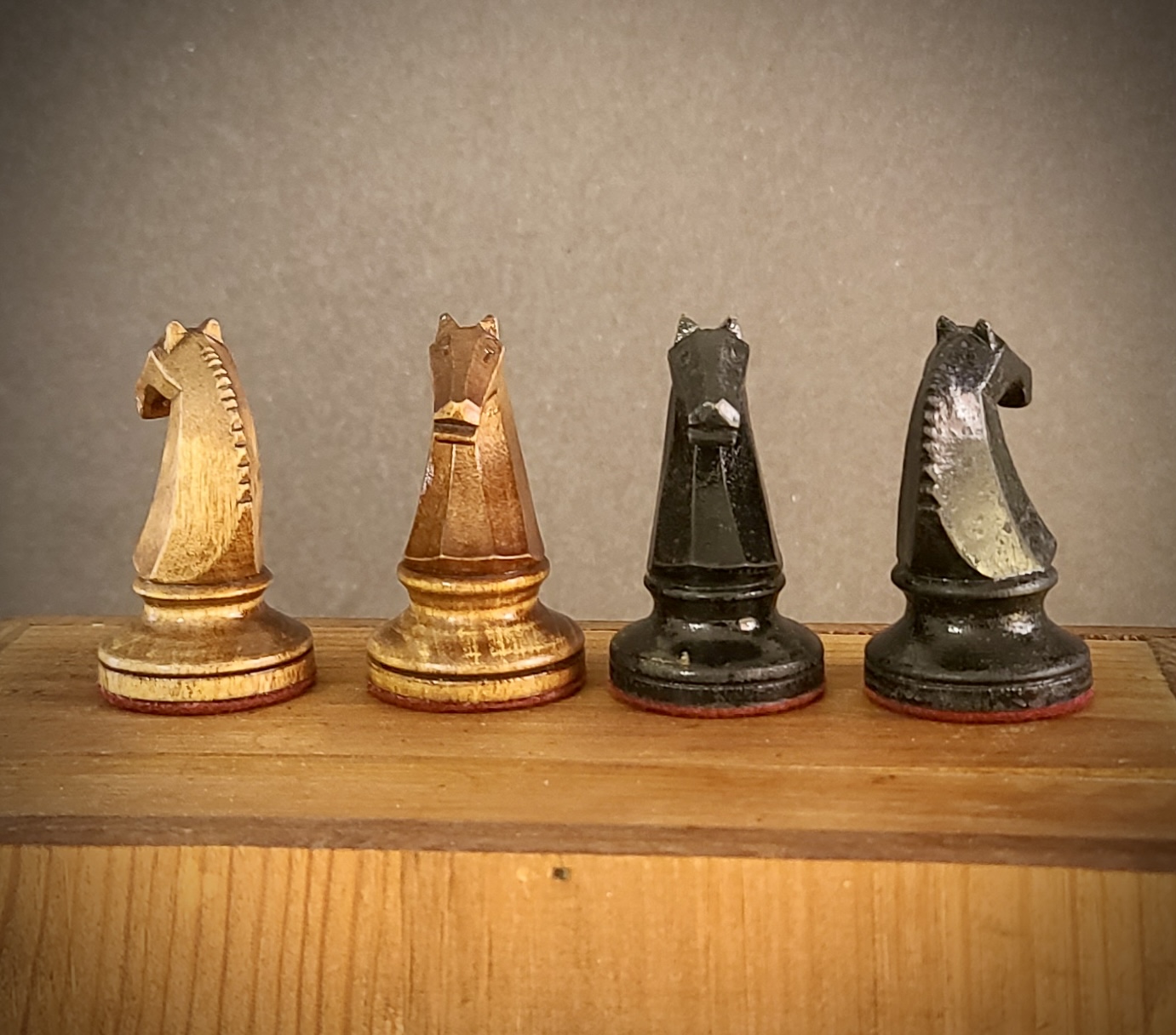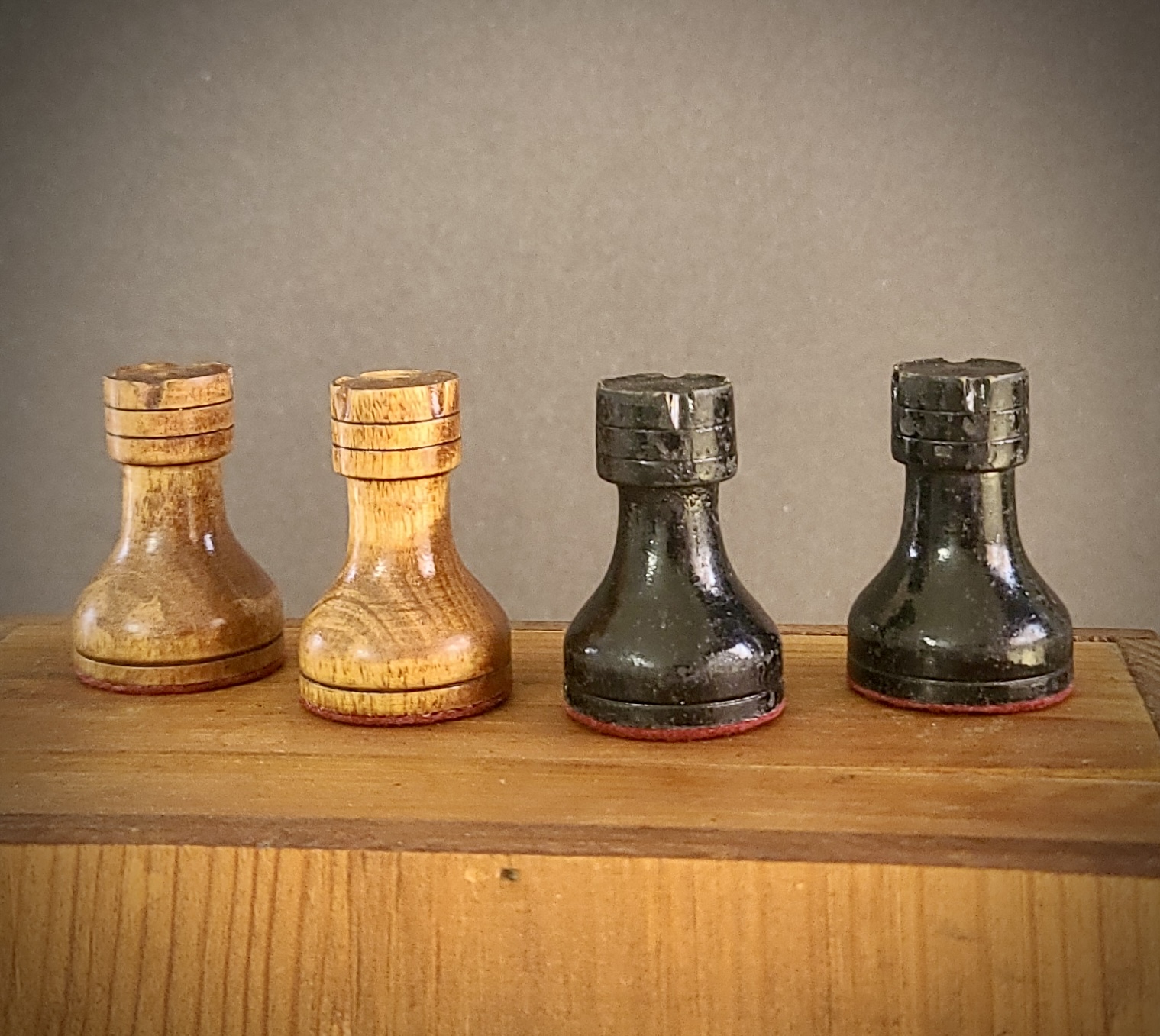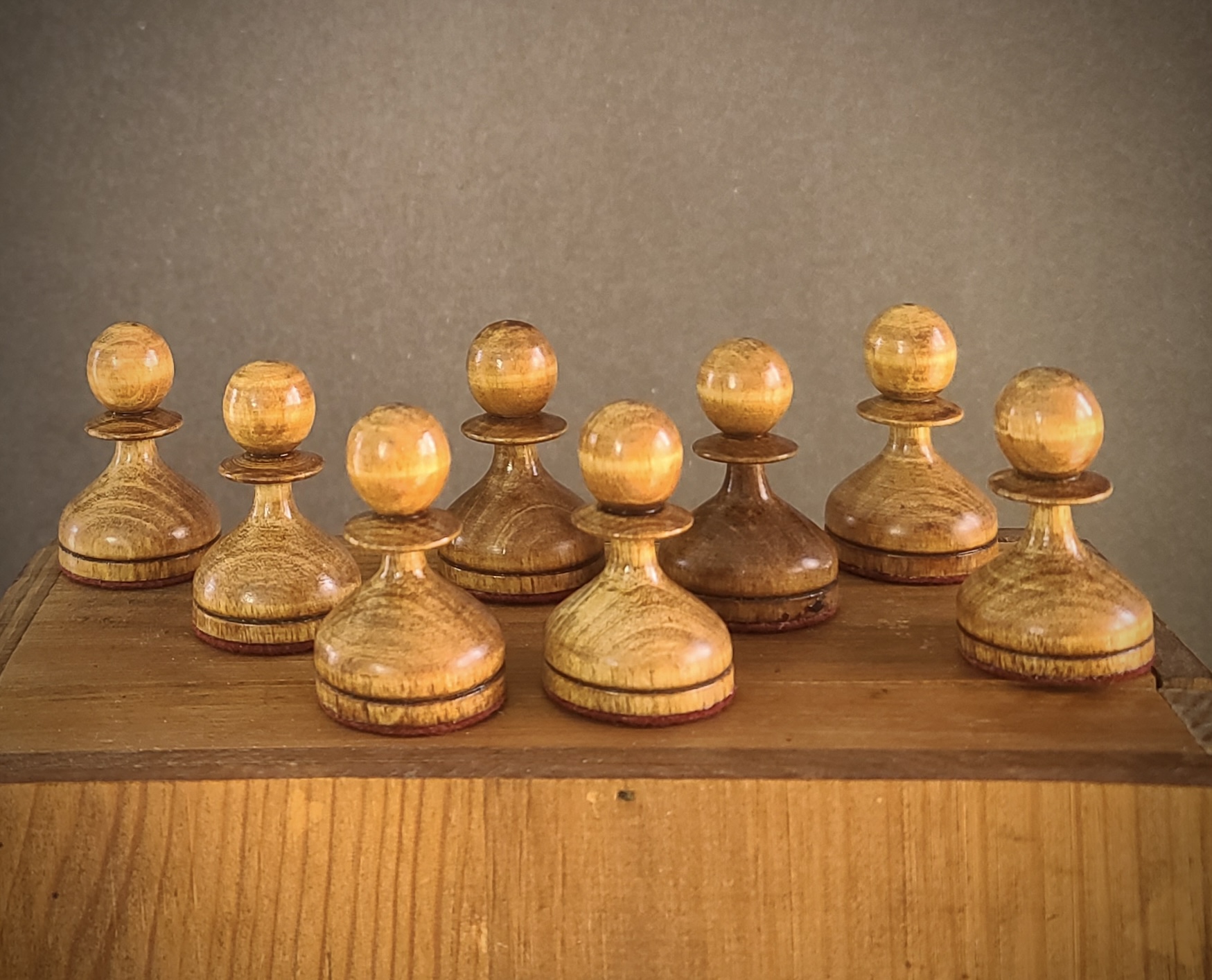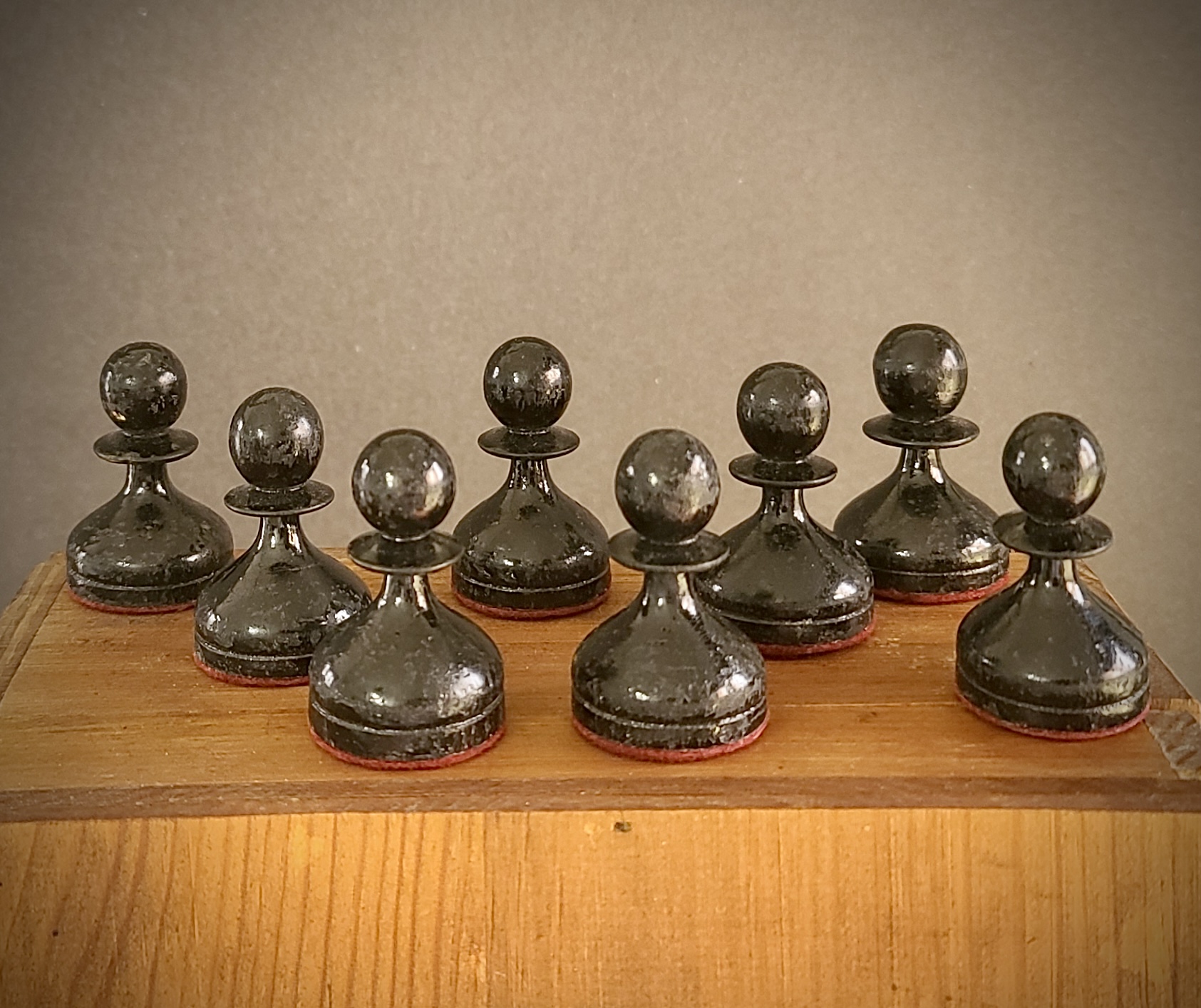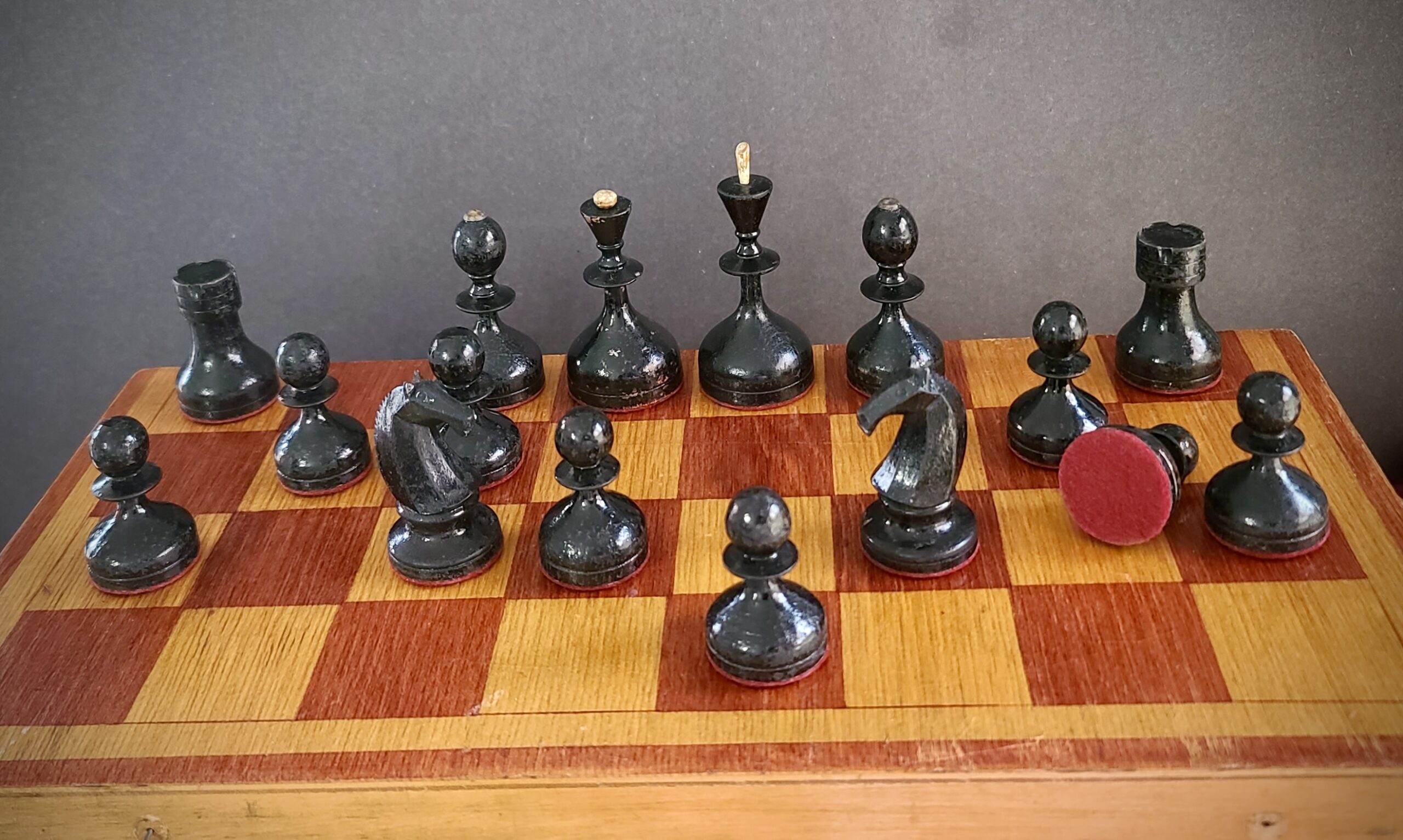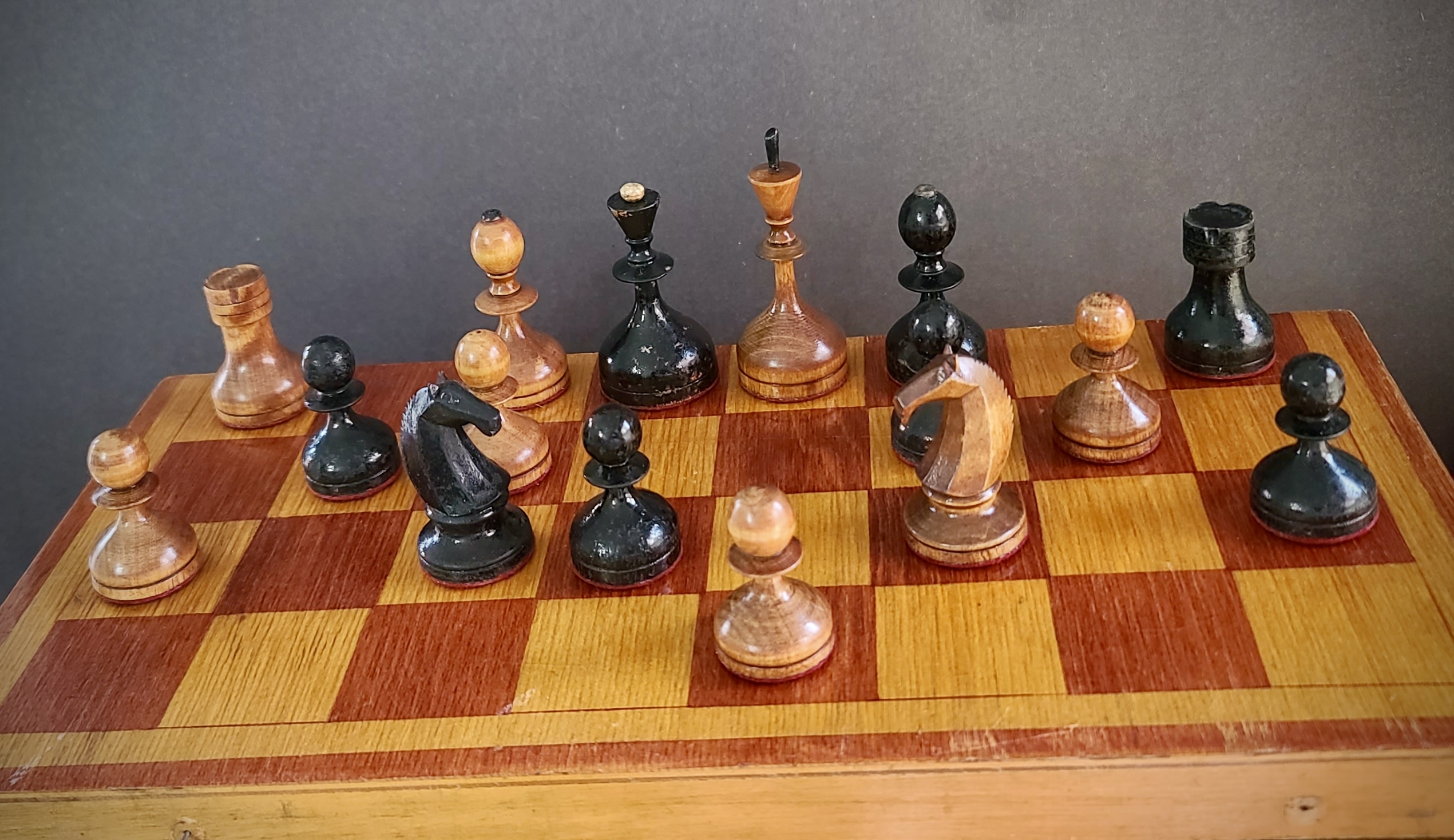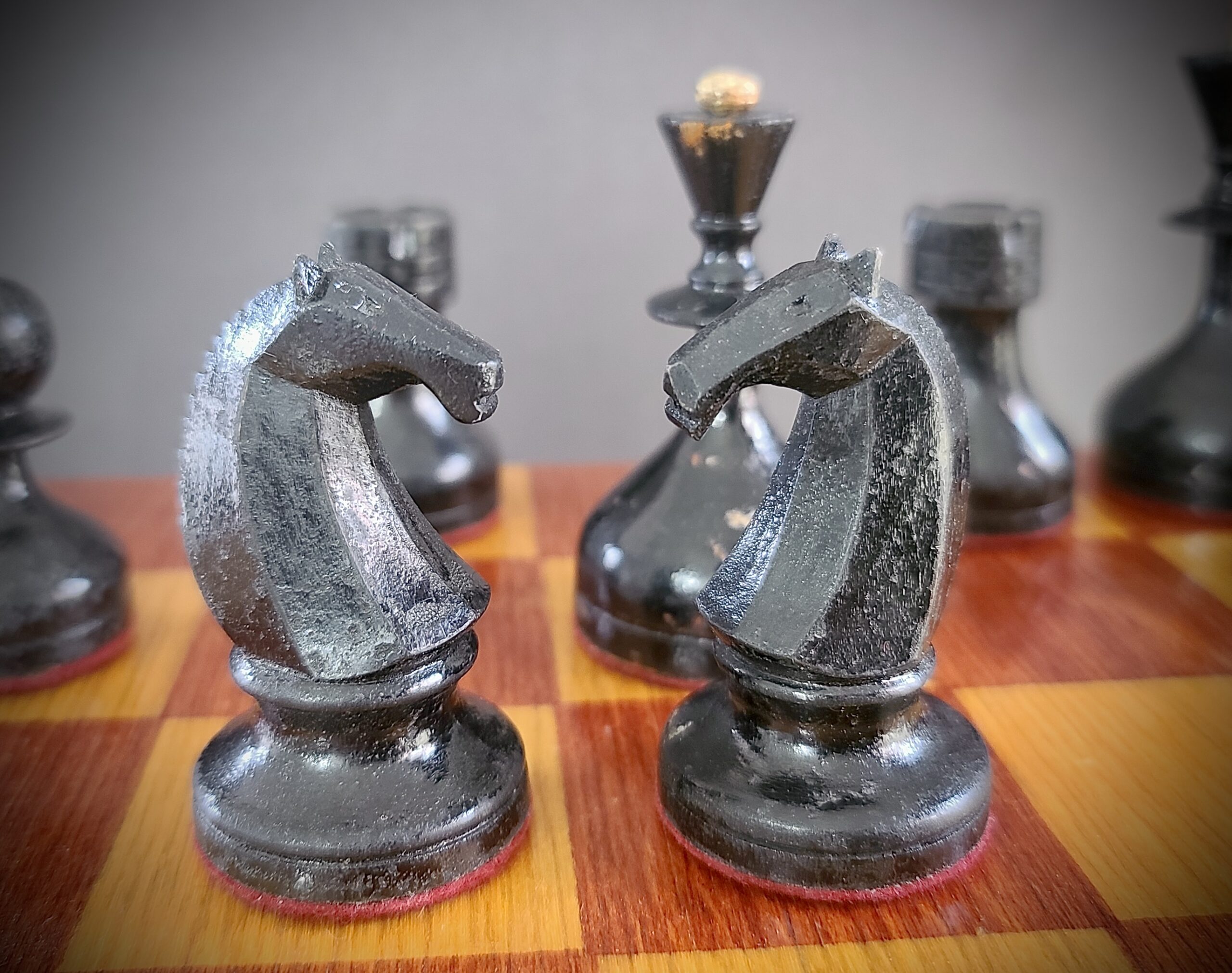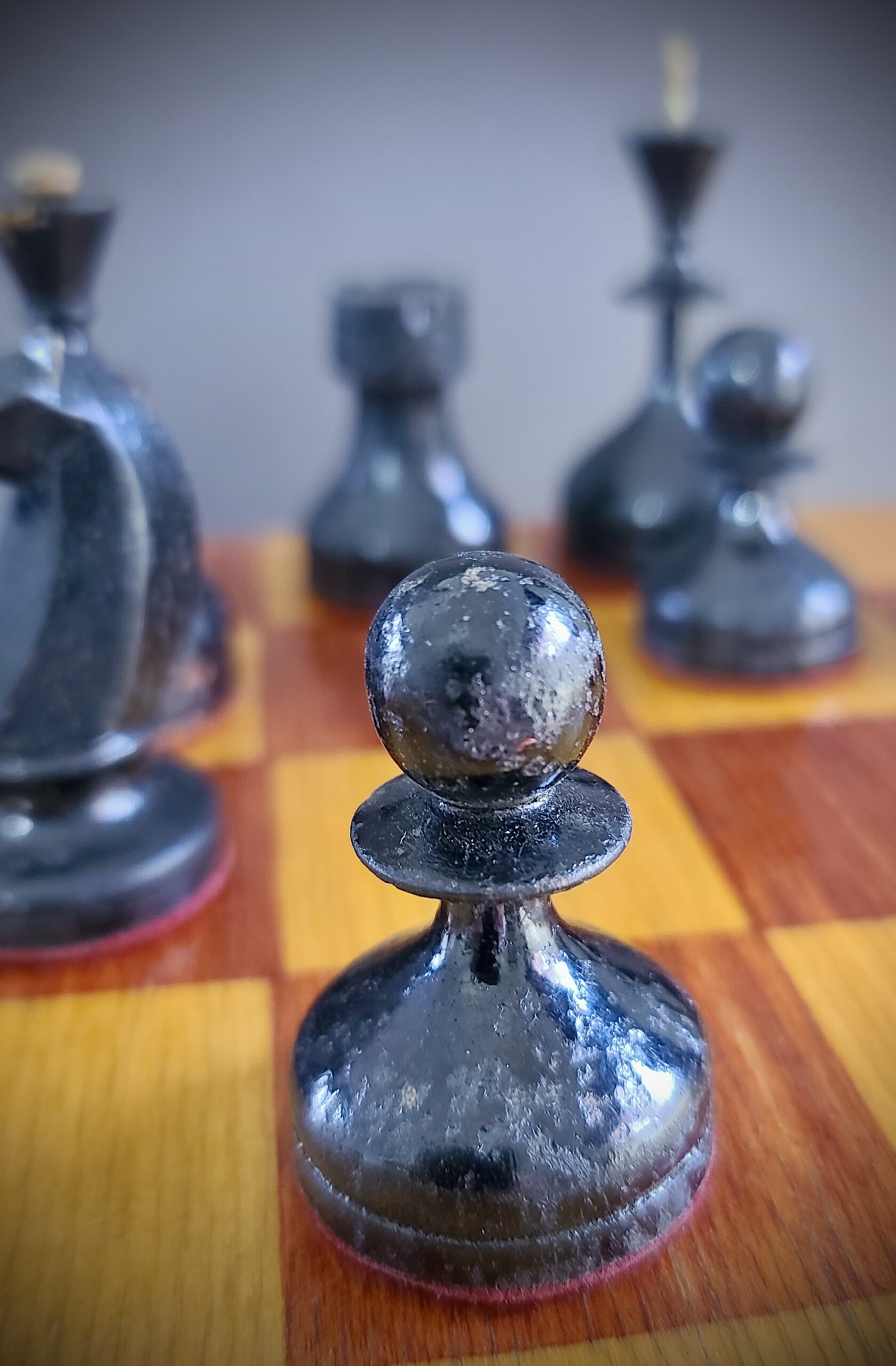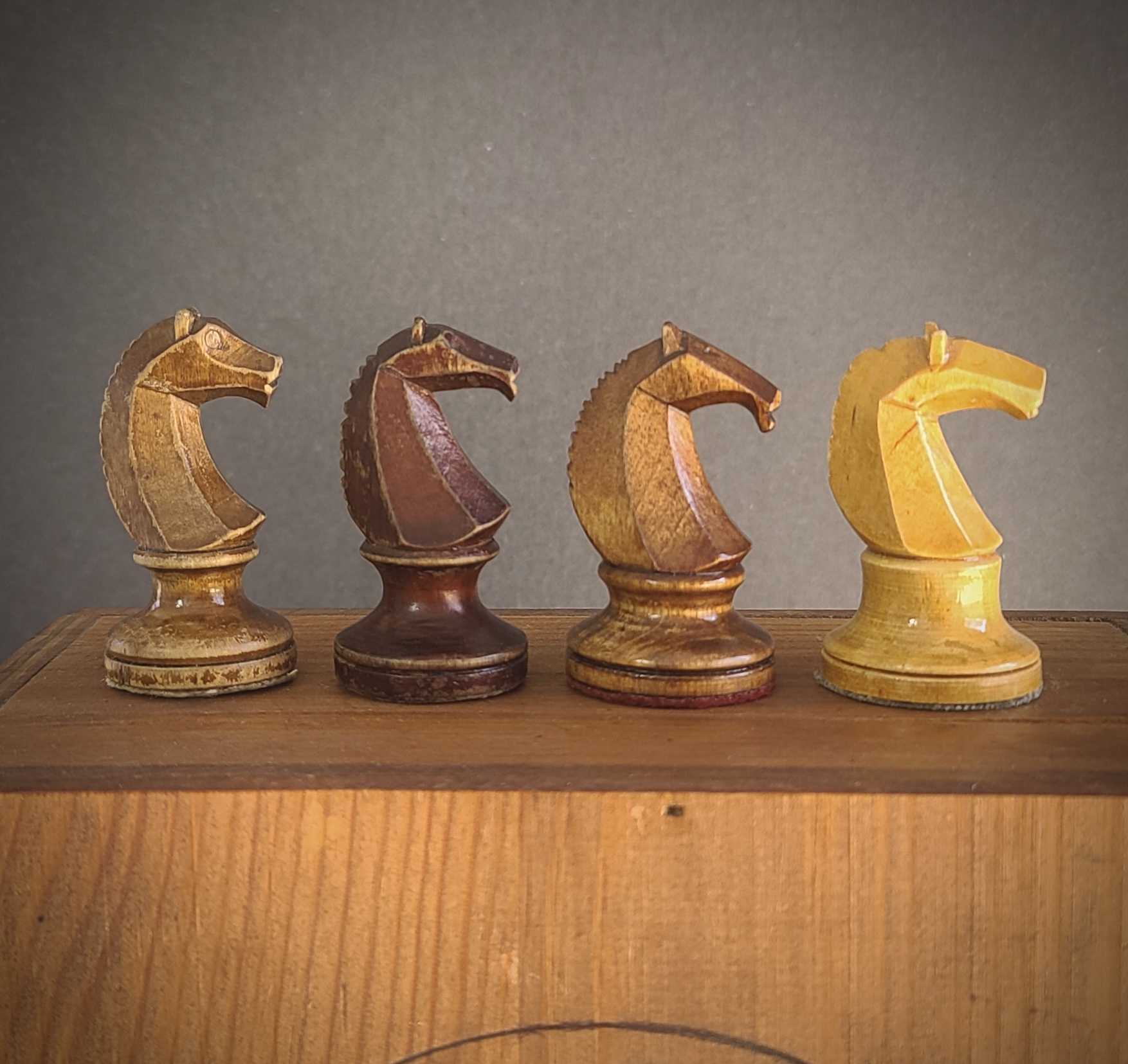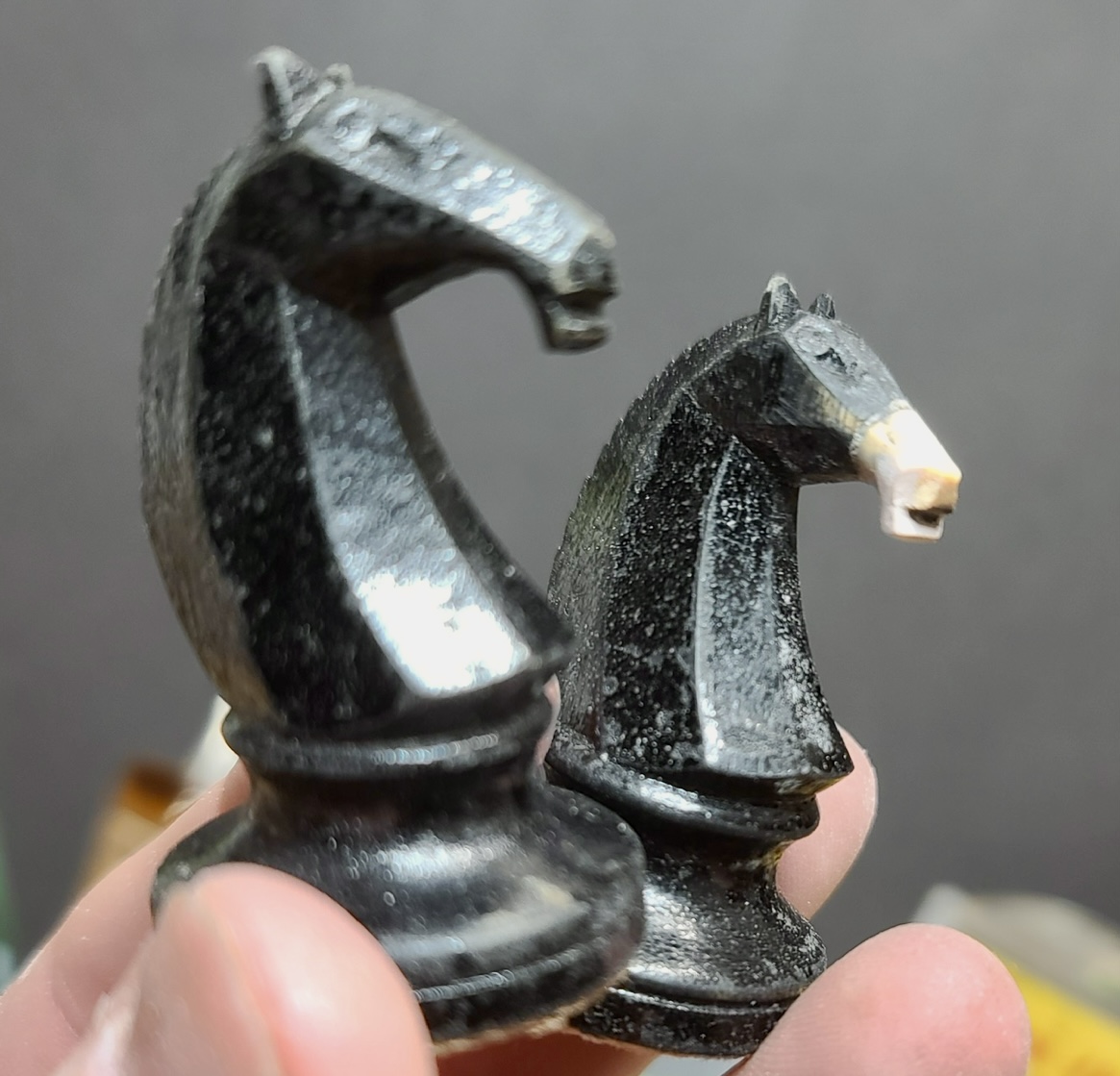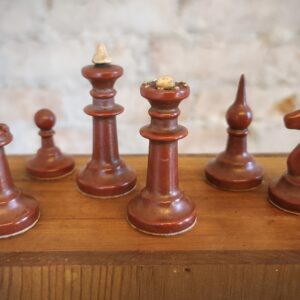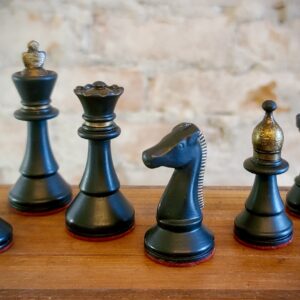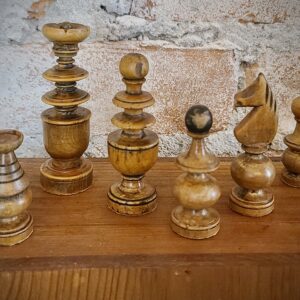The Noblemen (Boyarin, Rus: Боярин); 32 vintage chess pieces without board; Soviet, Valdai Regional Industrial Manufactory, ‘Valdayski’ or ‘Noble’ design, maple, natural wood vs. original black lacquer, unweighted, artistically restored/re-imagined, c.1955-1960
King Height; 8.7cm, weight 14g, base width 3.5cm
Queen; 7cm, wt. 14g, bw 3.6cm
Bishop; 6.5cm, 13g, bw 3.2cm
Knight; 5.5cm, 11g, bw 3.2cm
Rook; 4.6cm, 11g, bw 3.2cm
Pawns, 4.5cm, 8g, bw 2.9cm
W: Royal Maroon felt pads; B: same
I absolutely adore these Noble patterns – as you may well know-ble! – and this intriguing combination of the early 1950s Valdai pattern and those of the mid-1960s has been sitting in my reference collection for just over six years now – for reasons I’ll explain momentarily. In many ways, they are identical to the later birch wood sets, coated in a sumptuous yellow-amber shellac vs. black combo, but here we note the considerably larger bishop signifiers (compared to the earlier, modestly domed clerics) and knights that retain their finely fluted manes, and in this example, sport a delicately carved ‘drop-jaw’ (as opposed to the simpler blunt-ended – but still damned attractive – muzzles of other Valdai patterns. The style of these Boyarin* chessmen is unmistakably Soviet and is a prime example of the sprawling, bottom-heavy bases – a common, if not, trademark design of many post-WWII Soviet sets, compensating for the lack of lead and expeditious, cost-cutting demands of the imperious Ministry of Arts and Cultural Goods of post-Stalin Russia.
As mentioned, the main problem with these deep, chestnut-brown vs. black chess sets is how the ‘light’ side has darkened over the decades – an off-putting sight to any of my chess-playing guests. So, after a great deal of deliberation – and ultimately yearning for an old Valdai set that was actually playable! – I decided to bite the bullet and gently clean the top layer of shellac using the same techniques that I would use to restore the shellacked finish of an antique piece of furniture. The result was magnificent, as you can see. The dark pieces I have left in their original condition, which at first sight may seem like a rough, unsightly finish, but if it catches the light you’ll be amazed how the patina is transformed into an array of flecked blue and purple hues – as only you can discover if you’ll take my advice and invest in this unique example of an early Valdai chessmen.
*In my opinion, the moniker ‘Nobles’ or ‘Boyarin’ probably refers to the upper echelons of the Old Rus/Slavic society, when the upper nobility were known as Boyards or Boyars. In today’s lingo, I would roughly translate this as “Top Boys,” i.e. the corrupt, aristocratic thugs (grandees, noblemen, wise-guys, gangstas – pick a term …) that manipulated the royal courts of medieval Europe. A tempting, and perhaps related alternative is the obscure Latin term, ‘decorous’ meaning ‘a noble’ (‘to be decorated’). Implying a decorative or everyday chess set.
Restoration work: The white kings collar and the black queens collar had sizeable chunks lost from them. These have been repaired and matched to original finish. One black knight has also been restored and the finish matched. The use of black vs. white royal finials is my own, as all finials were missing. These have been aged to match the set. The opposing coloured bishop buttons are also my own design – just because… (thank me later).
Both queens carry the iridescent gold ‘Power’ signature on their bases and The High-Kings are also accompanied by our unique Chess Schach Certificate of Artistry.
Etsy Set Price: $950.00
thechessschach.com Set Price: $800.00 Canadian inc. free shipping
Ref Code: B25


